Phase I - Screener
Experimental Study of Patient Information Prototypes
Quantitative Questionnaire
Phase I - Screener
OMB: 0910-0691
DRAFT DRAFT DRAFT
11/16/2010 Draft
Quantitative Questionnaire, Phase II
Parameters
Proposed Study Design and Protocol
2 x 2 x 2 + 1 + 1
Administration (online, paper) x Context (yes, no) x format (bubbles, OTC) + online control + paper control
N = 1300; n per cell = 130
Online administration:
2 x 2 + 1
|
|
Format |
|
|
|
|
Bubbles |
OTC |
|
Context |
Yes |
|
|
+ Control |
No |
|
|
||
Paper administration:
2 x 2 + 1
|
|
Format |
|
|
|
|
Bubbles |
OTC |
|
Context |
Yes |
|
|
+ Control |
No |
|
|
||
Participants will be randomly assigned to conditions. Each participant will see only one version of the patient information.
The sample will be limited to people 18 years of age or older who have been diagnosed with:
• Rheumatoid arthritis,
• Juvenile rheumatoid arthritis,
• Ankylosing spondylitis, or
• Plaque psoriasis
Participants will be prescreened to obtain a range of literacy levels and a relatively even gender split. Protocol will take place via Internet administration.
The computer program should have the capability to record time spent on any screen.
[PROGRAMMER:
We need to record time in milliseconds spent on each screen
(including questions and introductory screens) throughout protocol.
•
Notes in red are for design purposes only and should NOT be visible
to participants]
Protocol
Informed Consent Procedure (Participants will be blind to FDA’s sponsorship).
[PROGRAMMER: First screen. Please include “Click to continue” button at bottom of each screen]
Thank you for agreeing to help us with this project today.
[PROGRAMMER: New screen]
Please make sure you are comfortable and can read the screen from where you sit. This project is about information that patients get with their prescription drugs. You will see a patient information sheet for a new drug called Rheutopia and then you will be asked some questions about it. You will be able to look at the information sheet as long as you like and return to it if needed at any point in the project. Your answers are kept private. This means that no one will ever connect your name with your answers. Your help is important and we thank you.
[PROGRAMMER: New screen]
When you have finished reading this screen, go on to the next screen to see a patient information sheet about a prescription drug. Please imagine that you have just picked up this prescription drug from the pharmacy and you are looking at the printed information that comes with it. Please look at the information sheet as long as you like and continue to the next screen to complete the project. You may view the information sheet in a pop-up screen as you go through the project, looking at it if you like.
[PROGRAMMER: Show participants randomly assigned version of information and record time spent. When participants click to next screen, give them method to access information again as needed.]
Now please answer the following questions based on the information you read in the patient information sheet.
Q1. What does Rheutopia
treat?
(open-ended)
Possible codes:
• Rheumatoid arthritis
• Juvenile rheumatoid arthritis
• Plaque psoriasis
• Osteoarthritis
• Acne
• Other (list)
[PROGRAMMER: randomize Q2a-d]
Q2. (Behavioral Intention) Imagine your doctor has recommended that you take Rheutopia. When you picked up the prescription, you received this patient information sheet along with the Rheutopia.
Please rate how likely you are to do each of the following five things.
|
1 |
2 |
3 |
4 |
5 |
a. Contact your doctor’s office to ask a question about Rheutopia |
|
|
|
^ |
^ |
b. Look for more information about Rheutopia on your own |
|
|
|
^ |
^ |
c. Ask your pharmacist a question about Rheutopia |
|
|
|
|
|
d. Start taking Rheutopia as prescribed |
* |
* |
|
|
|
*Q2e. [PROGRAMMER: Ask only of participants who selected 1 or 2 in response to Q2d; open-ended]
How did you decide on your
answer?
(open-ended)
Possible Codes:
• Risks
• Too expensive
• Don’t know why they need it
• Other
^Q2f. [PROGRAMMER: Ask only of participants who selected 4 or 5 in response to Q2a or Q2b; open-ended]
What additional information
would you look for?
(open-ended)
Possible Codes:
• Side effects
• How well it works
• Drug interactions
• How long it takes to work
• Other
(Self-efficacy)
Q3. How confident are you that you can read and understand the information on this sheet?
1 |
2 |
3 |
4 |
5 |
Not at all confident |
|
Somewhat confident |
|
Very confident |
(Perceived risk)
[PROGRAMMER: Randomize Q4-Q8]
Q4. Based on the patient information sheet, would you be worried about getting a side effect from Rheutopia?
___Yes
___No
[PROGRAMMER: If yes to Q3, ask Q3a]
Q4a. How worried would you be about getting a side effect from Rheutopia?
1 |
2 |
3 |
4 |
5 |
Not at all worried |
|
Somewhat worried |
|
Very worried |
Q5. Based on the patient information sheet, how safe would Rheutopia be for you?
1 |
2 |
3 |
4 |
5 |
Not at all safe |
|
Somewhat safe |
|
Very safe |
Q6. Based on the patient information sheet, how risky would Rheutopia be for you?
1 |
2 |
3 |
4 |
5 |
Not at all risky |
|
Somewhat risky |
|
Very risky |
Q7. How likely do you think you are to get a serious infection if you were to take Rheutopia?
1 |
2 |
3 |
4 |
5 |
Not at all likely |
|
Somewhat likely |
|
Very likely |
Q8. How likely do you think you are to have side effects like headache, redness or runny nose if you were to take Rheutopia?
1 |
2 |
3 |
4 |
5 |
Not at all likely |
|
Somewhat likely |
|
Very likely |
(Perceived benefit)
Q9. Based on the patient information sheet, how well would Rheutopia work for you?
1 |
2 |
3 |
4 |
5 |
Not at all |
|
Somewhat |
|
Very well |
Q10. How likely is it that Rheutopia would improve your symptoms of [insert condition]?
1 |
2 |
3 |
4 |
5 |
Not at all likely |
|
Somewhat likely |
|
Very likely |
Please answer the following questions the best you can based on the information sheet you have.
[PROGRAMMER: Randomize order of Q11-Q17 and randomize response options within each question except for the “not sure” answers, which should always be last]
Q11. Mary has been taking Rheutopia for 4 weeks. She woke up and noticed that her vision is blurry. She is about to take her next dose of Rheutopia. According to the patient information sheet, what should Mary do?
-
 Take
her next dose
Take
her next dose Take
her next dose then call her doctor
Take
her next dose then call her doctor Not
take the next dose and call her doctor
Not
take the next dose and call her doctor Not
sure
Not
sure
Q12. Ted takes Rheutopia. He noticed an area on his skin that was warm, red and painful. According to the patient information sheet, what should Ted do?
-
 Soak
the area in warm water
Soak
the area in warm water Soak
the area in warm water and take a pain medicine
Soak
the area in warm water and take a pain medicine Take
the next dose of Rheutopia and call his doctor
Take
the next dose of Rheutopia and call his doctor Not
take the next dose and call his doctor
Not
take the next dose and call his doctor Not
sure
Not
sure
Q13. According to the patient information sheet, people who take Rheutopia can develop dry skin.
-
 True
True False
False Not
sure
Not
sure
Q14. The patient information sheet says Rheutopia can affect your immune system. Because it affects your immune system, what can happen if you take Rheutopia?
-
 Nothing
Nothing The
Rheutopia will help you fight infection
The
Rheutopia will help you fight infection You
may develop a bad infection and could die
You
may develop a bad infection and could die Not
sure
Not
sure
Q15. Rosie went to the pharmacy and picked up her prescription for Rheutopia. She has never given herself a shot before and no one has taught her how. According to the patient information sheet, what should Rosie do?
-
 Wash
her hands before giving herself the shot
Wash
her hands before giving herself the shot Get
instructions online on how to give herself a shot
Get
instructions online on how to give herself a shot Call
her doctor to get instruction on how to give herself a shot
Call
her doctor to get instruction on how to give herself a shot Not
sure
Not
sure
Q16. Jack missed his dose of Rheutopia. According to the patient information sheet, what should Jack do?
-
 Take
two doses as soon as he remembers
Take
two doses as soon as he remembers Take
the missed dose as soon as he remembers then take the next dose
at his
Take
the missed dose as soon as he remembers then take the next dose
at his
regularly scheduled time Skip
that dose and take the next dose on time
Skip
that dose and take the next dose on time Not
sure
Not
sure
Q17. According to the patient information sheet where should Rheutopia be stored?
-
 In
the medicine cabinet
In
the medicine cabinet In
the freezer
In
the freezer In
the refrigerator
In
the refrigerator Not
sure
Not
sure
Q18. (Recognition of uses) Please check which of the following were mentioned in the information sheet as reasons you might take Rheutopia.
[PROGRAMMER: randomize]
-
Yes
No
a. Rheutopia reduces painful and swollen joints.
x
b. Rheutopia treats rheumatoid arthritis in adults.
x
c. Rheutopia slows joint damage.
x
d. Rheutopia treats juvenile rheumatoid arthritis (JRA).
x
e. Rheutopia treats ankylosing spondylitis.
x
f. Rheutopia improves mobility.
x
g. Rheutopia treats plaque psoriasis.
x
h. Rheutopia clears up areas of skin with psoriasis.
x
i. Rheutopia treats aplastic anemia.
x
j. Rheutopia treats Lou Gehrig’s disease.
x
k. Rheutopia increases lung capacity.
x
l. Rheutopia reduces hyperactivity.
x
m. Rheutopia promotes hair growth.
x
n. Rheutopia slows bone loss.
x
Q19. Based on the information in the patient information sheet, what should you tell your healthcare provider about before taking Rheutopia? [PROGRAMMER: randomize] (Contraindications)
-
Yes
No
a. If you think your in-grown toenail is infected.
x
b. If you have ever tested positive for TB (tuberculosis).
x
c. If you have recently lived in France.
x
d. If you have nervous system problems
x
e. If you have ever had a heart attack.
x
f. If you are taking the medicine Kineret
x
g. If you just had a vaccination.
x
h. If you have kidney problems
x
i. If you have migraine headaches
x
j. If you have recently mowed grass or trimmed trees
x
k. If you recently had surgery
x
l. If you sometimes have blurry vision
x
m. If you have a family history of high cholesterol
x
Q20. James developed redness around the skin where he has given himself a Rheutopia shot. According to the patient information sheet, is redness something that can happen when taking Rheutopia?
-
 Yes
Yes No
No Not
sure
Not
sure
Q21. Kate has been taking Rheutopia for 4 weeks. She has noticed that she has a headache right after she takes Rheutopia but it goes away in few hours. After her last dose of Rheutopia Kate developed a headache that got worse and has lasted for several days. According to the patient information sheet, what should Kate do?
-
 Take
pain medicine before her next scheduled dose
Take
pain medicine before her next scheduled dose Stop
taking Rheutopia and take a pain medicine
Stop
taking Rheutopia and take a pain medicine Call
her doctor
Call
her doctor Not
sure
Not
sure
Q22. (Recognition of warnings/side effects) Please check which of the following were mentioned in the information sheet as possible side effects of taking Rheutopia.
[PROGRAMMER: randomize]
-
Yes
No
a. lowered ability to fight infections
x
b. TB (tuberculosis)
x
c. vision problems
x
d. swollen lymph nodes
x
e. sudden weight gain
x
f. redness and swelling where injection was given
x
g. headache
x
h. blindness
x
i. hearing problems
x
j. muscle weakness
x
k. increased chance of kidney failure
x
l. MS (multiple sclerosis)
x
m. stomach pain
x
[PROGRAMMER: Randomize order of Q23a-b]
Q23. (Ease of understanding) Please answer each of the statements below.
|
1 Not at all Clear |
2
|
3 Somewhat Clear |
4
|
5 Very Clear/ |
|
|
|
|
|
|
|
|
|
|
|
|
[PROGRAMMER: Randomize order of Q24a-b]
Q24. (Ease of understanding) Please answer each of the statements below.
|
1 Easy to Understand |
2
|
3 Somewhat Easy to Understand |
4
|
5 Hard to Understand |
|
|
|
|
|
|
|
|
|
|
|
|
[PROGRAMMER: randomize Q13-Q15]
Q25. (Subjective health literacy) How often do you have someone (like a family member or friend) help you read instructions, pamphlets, or other written material from your doctor or pharmacy?
-
 Never
Never Occasionally
Occasionally Sometimes
Sometimes Often
Often Always
Always
Q26. (Subjective health literacy) How confident are you filling out forms by yourself?
-
 Extremely
Extremely Quite
a bit
Quite
a bit Somewhat
Somewhat A
little bit
A
little bit Not
at all
Not
at all
Q27. (Subjective health literacy) How often do you have problems learning about your medical condition because of difficulty understanding written information?
-
 Never
Never Occasionally
Occasionally Sometimes
Sometimes Often
Often Always
Always
[PROGRAMMER: For the next several questions, please insert the appropriate medical condition based on the screener data]
Q28. How long ago did a healthcare provider tell you you had [insert medical condition]?
-
 Six
months ago or less
Six
months ago or less More
than six months ago but less than a year ago
More
than six months ago but less than a year ago A
year ago or more but less than five years
A
year ago or more but less than five years Five
years ago or longer
Five
years ago or longer
Q29. Are you taking a prescription medicine now for [insert medical condition]?
-
 Yes
Yes No
No I’m
not sure
I’m
not sure
Q30. How severe is your [insert medical condition] now? Would you describe it as:
-
 Very
mild
Very
mild Mild
Mild Moderate
Moderate Serious
Serious Very
serious
Very
serious
Q31. In general, how much would you say you know about [insert medical condition]? Would you say you know:
-
 Nothing
at all
Nothing
at all Only
a slight amount
Only
a slight amount Some
Some More
than some but not a lot
More
than some but not a lot A
lot
A
lot
Q32. In general, how much would you say you know about treatments for [insert medical condition]? Would you say you know:
-
 Nothing
at all
Nothing
at all Only
a slight amount
Only
a slight amount Some
Some More
than some but not a lot
More
than some but not a lot A
lot
A
lot
The next few questions about you.
Q33. Are you:
-
 Hispanic
or Latino
Hispanic
or Latino Not
Hispanic or Latino
Not
Hispanic or Latino
Q34. Which of these best represents your race? You may choose one or more. Would you say that you are:
-
 American
Indian or Alaska Native
American
Indian or Alaska Native Asian
Asian Black
or African-American
Black
or African-American Native
Hawaiian or Other Pacific Islander
Native
Hawaiian or Other Pacific Islander White
White
Q35. Gender
-
 Male
Male Female
Female
Q36. How many years of education have you had?
-
 Some
grade school
Some
grade school Completed
grade school
Completed
grade school Completed
middle school
Completed
middle school Some
high school
Some
high school Completed
high school or GED
Completed
high school or GED Some
college
Some
college Associate’s
Degree (2-year)
Associate’s
Degree (2-year) Bachelor’s
Degree (4-year)
Bachelor’s
Degree (4-year) Some
postgraduate work
Some
postgraduate work Postgraduate
degree (M.A., Ph.D., M.D., J.D., etc.)
Postgraduate
degree (M.A., Ph.D., M.D., J.D., etc.)
The next and final set of questions focuses on topics related to health and health care. First, you will read, view, or hear some health-related information. Then you will be asked some questions related to the information. The purpose of these questions is to find out what most people think and understand about some health care issues. If you do not know the answer to a question, then it is okay to check the box that says “Don’t know.” Some of the questions use names of people who are not real.
Q37. Cholesterol: Know What Your Level Means
-
Cholesterol: What Your Level Means
What is cholesterol?
Cholesterol is a waxy substance the body uses to protect nerves, make cell tissues and produce certain hormones.
Are there different types of cholesterol?
Yes. Cholesterol travels through the blood in different types of packages, called lipoproteins.
Low-density lipoproteins (LDL) deliver cholesterol to the body. High-density lipoproteins (HDL) remove cholesterol from the bloodstream.
Total cholesterol level
Less than 200 is best.
200 to 239 is borderline high.
240 or more means a person is at increased risk for heart disease.
LDL cholesterol levels
Below 100 is ideal for people who have a higher risk of heart disease.
100 to 129 is near optimal.
130 to 159 is borderline high.
160 or more means a person is at a higher risk for heart disease.
HDL cholesterol levels
Less than 40 means a person is at higher risk for heart disease.
60 or higher greatly reduces a person’s risk of heart disease.
Please answer the following questions based on the information in the text.
Which set of low density lipoprotein (LDL) and high density lipoprotein (HDL) levels is best?
Select one answer only
-
 LDL
of 134 and HDL of 61
LDL
of 134 and HDL of 61 LDL
of 98 and HDL of 82
LDL
of 98 and HDL of 82 LDL
of 140 and HDL of 50
LDL
of 140 and HDL of 50 LDL
of 165 and HDL of 80
LDL
of 165 and HDL of 80 Not
sure
Not
sure
Q38. Medical Center Information—audio recording
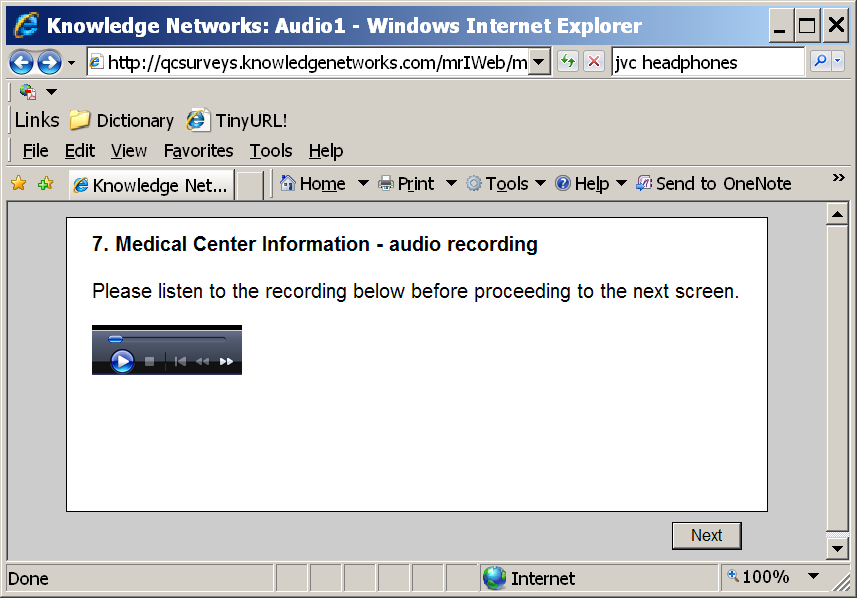
Please answer the following questions based on the information in the audio clip.
Click here if you would like to listen to the recording again.
If a person was worried about his cough, what number should he press?
Select one answer only
-
 1
1 2
2 4
4 Call
911
Call
911 Not
sure
Not
sure
Q39. Hospital Map
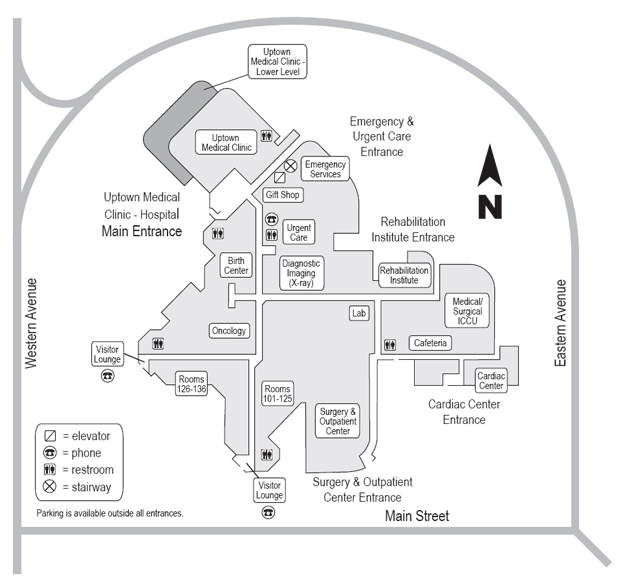
Please answer the following questions based on the information in the map.
Which of the following entrances is closest to the elevator?
Select one answer only
-
 There
is no elevator
There
is no elevator Surgery
& Outpatient Center Entrance
Surgery
& Outpatient Center Entrance Rehabilitation
Institute Entrance
Rehabilitation
Institute Entrance Main
Entrance
Main
Entrance Don’t
Know
Don’t
Know
Q40. Medicine Record
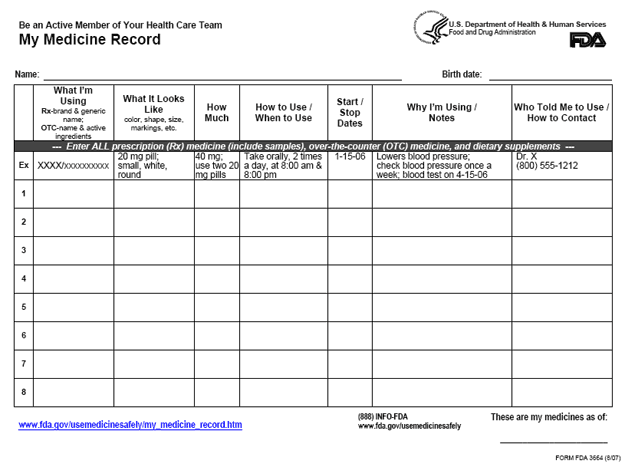
Please answer the following questions based on the information in the chart.
In the example listed in the first row of the table, when should the medicine be taken?
Select one answer only
-
 Two
times a day anytime between 8 a.m. and 8 p.m.
Two
times a day anytime between 8 a.m. and 8 p.m. At
8 a.m. or 8 p.m. each day
At
8 a.m. or 8 p.m. each day At
8 a.m. and 8 p.m. each day
At
8 a.m. and 8 p.m. each day Don’t
Know
Don’t
Know
Q41. Calories burned
Please read the questions below, then visit the following website to answer the questions. Answer the questions based on the information in the website.
http://www.healthwise.net/rti/Content/StdDocument.aspx?DOCHWID=tx4394
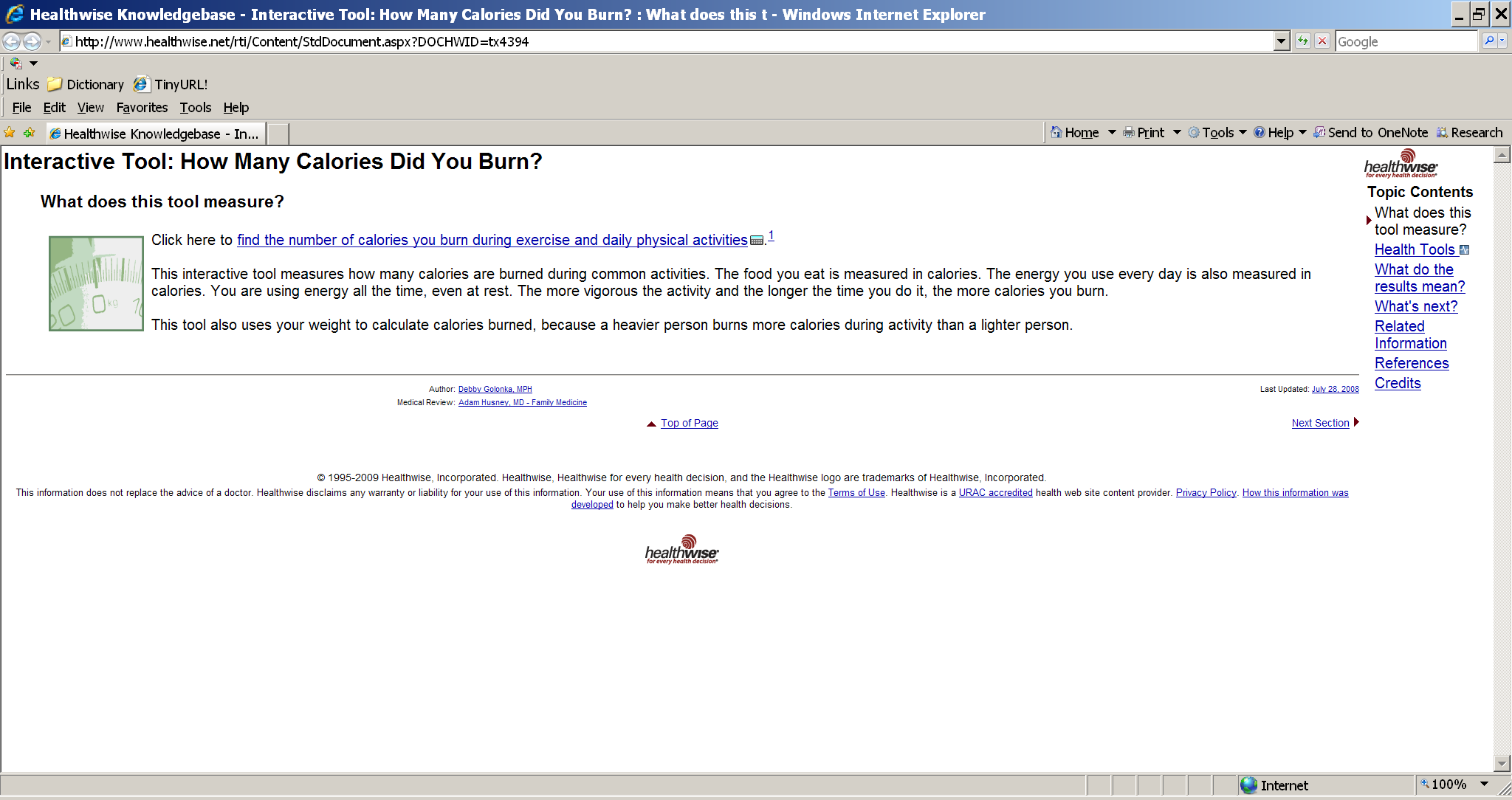
Please answer the following questions based on the information in the website.
Kate weighs 150 pounds. Which activity would burn the most calories?
Select one answer only
-
 Walking
at a medium pace for 30 minutes
Walking
at a medium pace for 30 minutes Raking
the lawn for 30 minutes
Raking
the lawn for 30 minutes Bowling
for 30 minutes
Bowling
for 30 minutes Don’t
Know
Don’t
Know
Q42. Signs of a stroke
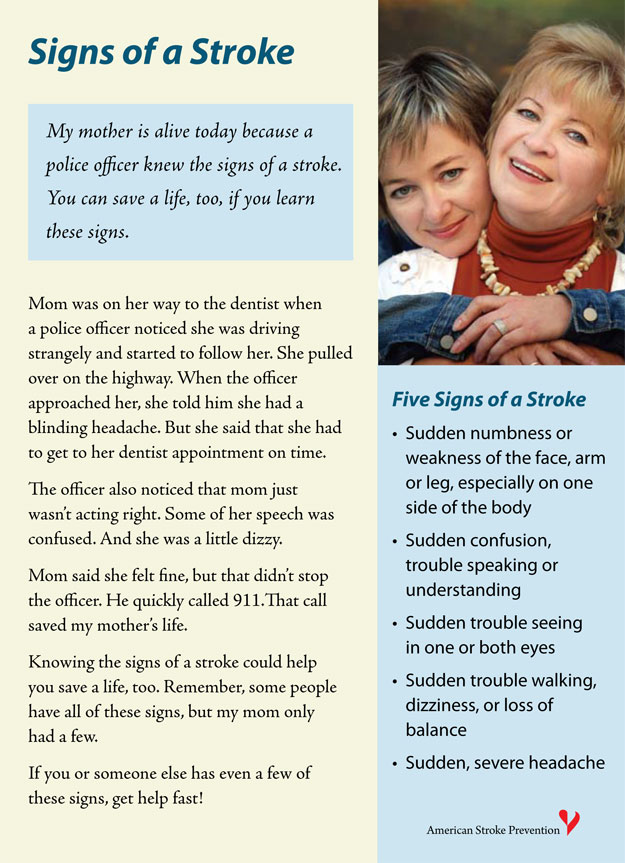
Please answer the following questions based on the information in the flyer.
Which of the following is NOT a sign of a stroke?
Select one answer only
-
 Shaking
chills
Shaking
chills Blurred
vision
Blurred
vision Bad
headache
Bad
headache Numbness
on one side
Numbness
on one side Don’t
Know
Don’t
Know
Q43. Portion Control for Weight Loss
-
Expanding portions
Are you eating a variety of healthy foods, exercising and still struggling with your weight? Some people may need to pay closer attention to portion control — managing the amount of food that they eat — as their total calorie intake determines their weight.
A serving isn’t what they happen to put on their plate. It’s a specific amount of food defined by common measurements, such as cups, ounces or pieces. The serving sizes represented here are part of the Mayo Clinic Healthy Weight Pyramid — a food pyramid designed to promote weight loss and long-term health. Use these serving sizes in conjunction with a diet based on a variety of healthy foods. Add the right amount of regular physical activity, and a person will be well on their way to enjoying good nutrition and controlling their weight.
Vegetables
Until they’re comfortable judging serving sizes, you may need to use measuring cups and spoons. A half a cup of cooked carrots, for example, equals one serving. Here are the recommended serving sizes for other vegetables:
Food
Serving size
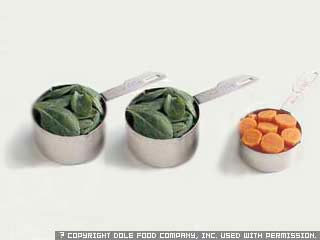
Raw leafy vegetables
=
2 cups
Raw vegetables, chopped
=
1 cup
Chopped, cooked or canned vegetables
=
1/2 cup
Meat and beans
Familiar objects can help a person picture proper portions for meat, poultry, fish and beans. For example, a 3-ounce serving of fish is about the size of a deck of cards. Here are the serving sizes for meat and meat substitutes:
Food
Serving size

Cooked skinless poultry or fish
=
3 ounces
Cooked lean meat
=
1 1/2 ounces
Cooked legumes or dried beans
=
1/2 cup or about the size of an ice cream scoop
Egg
=
1 medium
Used with permission from Mayo Foundation for Medical Education and Research. “Mayo,” “Mayo Clinic,” “MayoClinic.com,” “Mayo Clinic Health Information,” and the triple-shield Mayo logo are trademarks of MFMER. All Rights Reserved.
Please answer the following questions based on the information in the text and charts.
A person is cooking dinner for himself and he wants to include one serving from the meat and beans group. What should he choose?
Select one answer only
-
 1
½ ounces of cooked lean beef
1
½ ounces of cooked lean beef 1
½ ounces of cooked fish
1
½ ounces of cooked fish 3
boiled eggs
3
boiled eggs 1
cup of cooked kidney beans
1
cup of cooked kidney beans Don’t
Know
Don’t
Know
Q44.
Lunge
Please watch the video below before proceeding to the next screen.
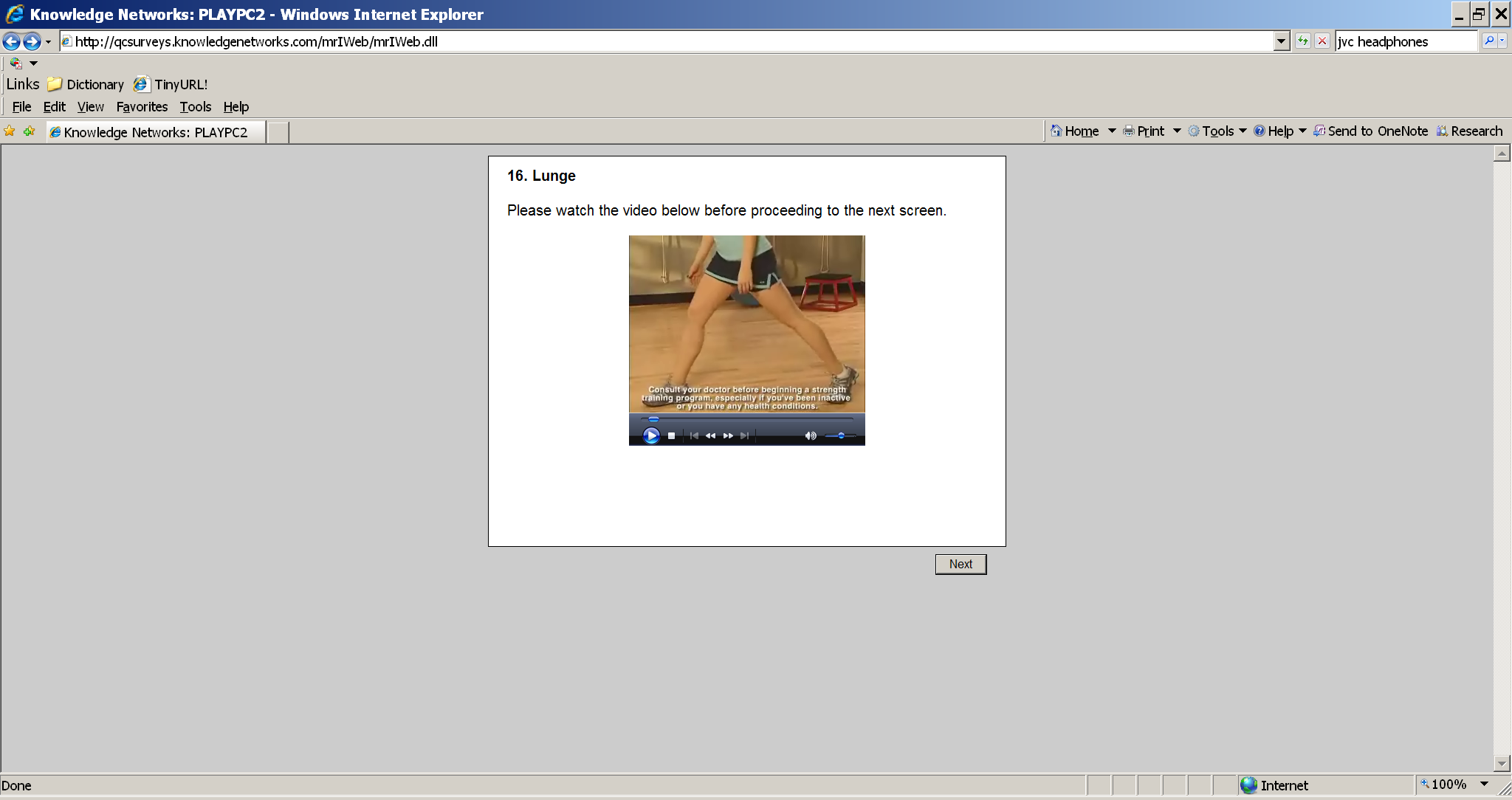
Used with permission from Mayo Foundation for Medical Education and Research. “Mayo,” “Mayo Clinic,” “MayoClinic.com,” “Mayo Clinic Health Information,” and the triple-shield Mayo logo are trademarks of MFMER. All Rights Reserved.
Please answer the following questions based on the information in the video clip.
Click here if you would like to watch the video again.
What parts of the body do lunge exercises work?
Select one answer only
-
 Arms
and shoulders
Arms
and shoulders Back
and abdomen
Back
and abdomen Legs
and buttock
Legs
and buttock Don’t
Know
Don’t
Know
Q45. Food Nutrition Label
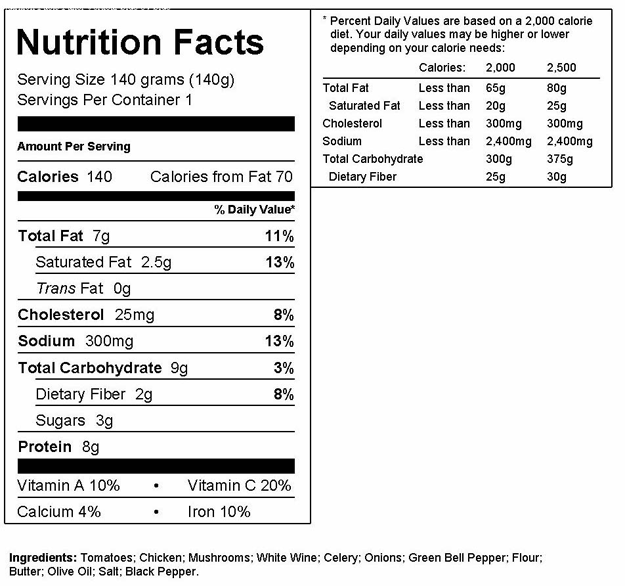
Sherri Pinero, RD, www.recipeanalysis.com
Please answer the following questions based on the information in the label.
If a person is on a 2,500 calorie diet, what percent of the daily value of saturated fat would he get from one serving?
Select one answer only
-
 10
percent
10
percent 11
percent
11
percent 12
percent
12
percent 13
percent
13
percent Not
sure
Not
sure
Q46. Prostate Cancer
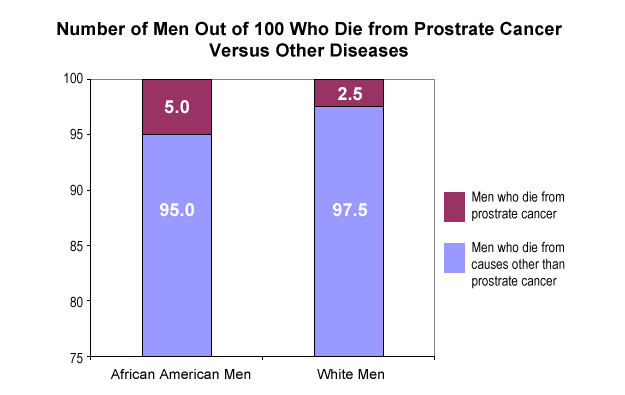
Please answer the following questions based on the information in the chart.
More men die from prostate cancer than from other causes. Based on the chart above, would you say this is true, false, or are you not sure?
Select one answer only
-
 True
True False
False Not
sure
Not
sure
[PROGRAMMER: New screen]
This concludes the survey. Our goal was to gather patient reactions to important information about prescription drugs. To get your true reaction to this information, we used a fake brand of drug in this project. Rheutopia is not a real drug and it is not available for use or sale. Please contact your healthcare provider for any questions about your health.
Thank you very much for your time.
*****************************************
| File Type | application/msword |
| File Title | Brainstorming of Questions for Brief Summary Study 2 |
| Author | BRAMANA |
| Last Modified By | BRAMANA |
| File Modified | 2010-11-17 |
| File Created | 2010-11-17 |
© 2026 OMB.report | Privacy Policy